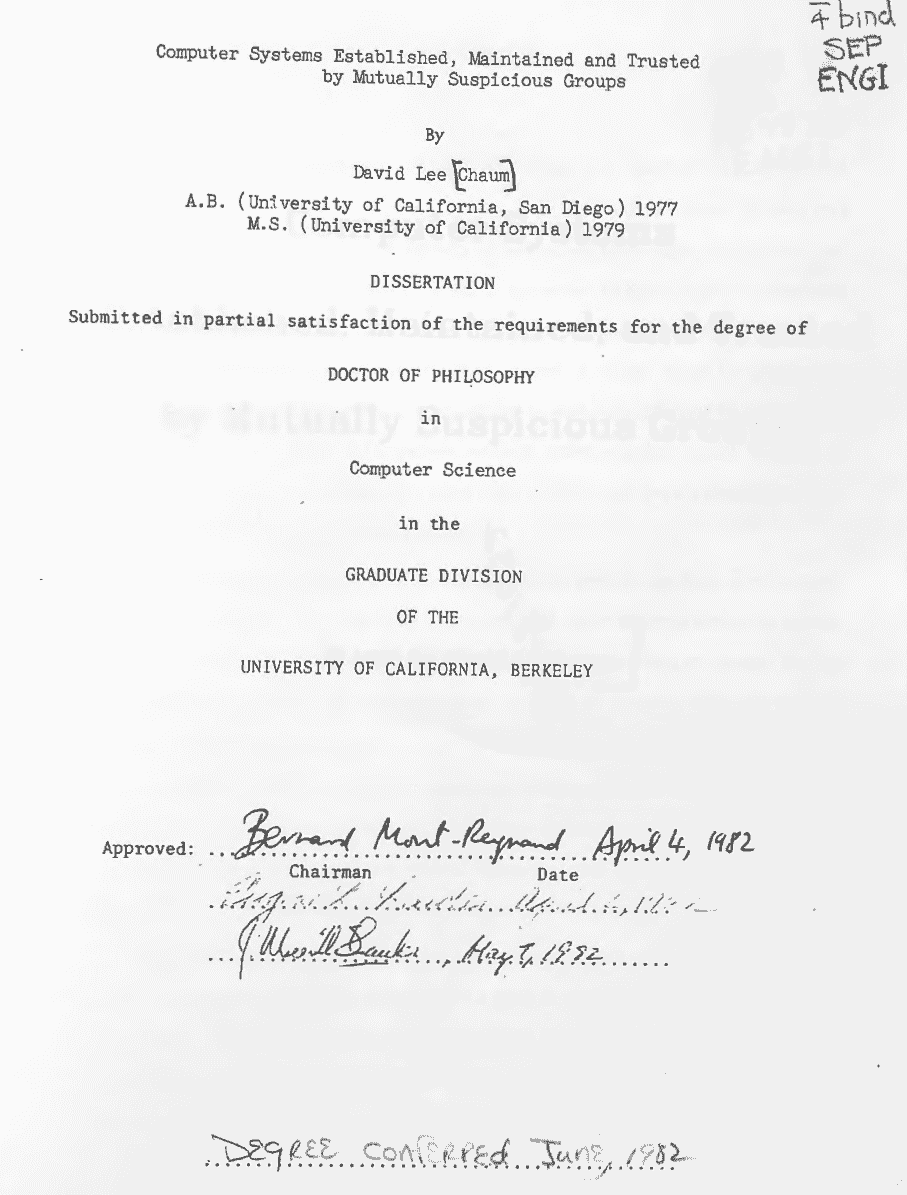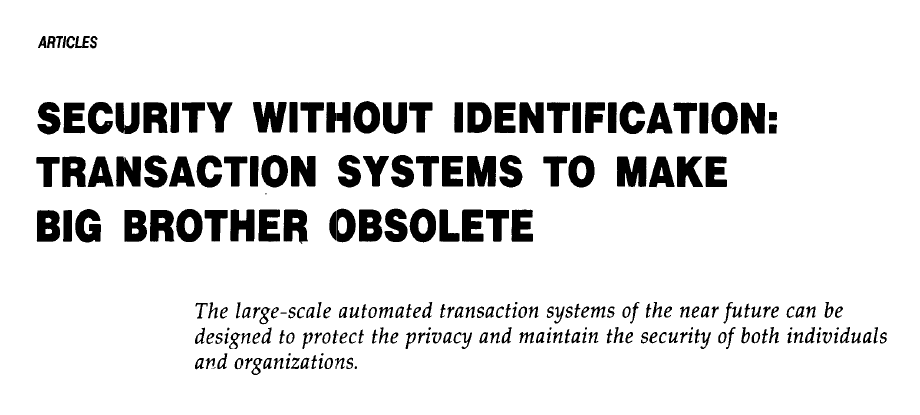Cypherpunk Manifesto Released
What is the Cypherpunk Manifesto?
The Cypherpunk Manifesto was a short 12 paragraph essay by American programmer and mathematician Eric Hughes.
The manifesto stressed the importance of privacy and looming threats to it in an increasingly digital age.
It concludes up with calls to action for fellow privacy-conscious ‘cypherpunks’ to write code that protects privacy and to make this code public for anyone to use.

When Was the Cypherpunk Manifesto Released?
The Cypherpunk Manifesto was originally published on March 9, 1993.
What Did the Cypherpunk Manifesto Say?
While the entire read is quite short, the gist of the manifesto can be summarized as follows:
- Privacy and secrecy are not the same thing.
- We cannot prevent those who know our private matters from speaking about them to others because freedom of speech is important to an open society.
- It is often to the advantage of institutions to know as much about us as possible and to speak about private matters to others.
- Thus it is up to each person to protect his own privacy.
- Because of this, we should design systems that allow us to give away as little private information about ourselves as possible.
- This mission is the mission of the cypherpunk.
- Cypherpunks should also make their code freely available for others to use and improve on.
- We should also oppose regulations on cryptography since encrypting is merely the act of removing information.
That’s really all there is to it, but you can read the whole text on activism.net.
Background Leading Up to Publishing
The Cypherpunk Manifesto was not the first attempt to raise awareness among researchers of the importance of building privacy-preserving technologies.
As far back as 1981, Berkeley cryptographer and computer scientist David Chaum was already outlining potential systems of increased privacy by utilizing cryptography for everyday people.
His most notable paper on this topic (and one that would have significant impact on the creation of bitcoin) came in the form of his doctoral dissertation, entitled Computer Systems Established, Maintained, and Trusted by Mutually Suspicious Groups.

In this dissertation, Chaum outlines a distributed computer system eerily similar to what would become bitcoin, but without a proof-of-work mechanism to reach consensus on the blockchain about the order of transactions.
Even more important was Chaum’s 1985 paper, entitled Security without Identification: Transaction Systems to Make Big Brother Obsolete

This paper further detailed Chaum’s ideas on how to create a system of financial transactions that preserve privacy.
It was this paper that played the largest role in the 1992 recurring San Francisco meetings of the cypherpunks started by Eric Hughes, Timothy C. May, and John Gilmore.
From these meetings would come the Cypherpunk Mailing List, again started by Hughes, May, and Gilmore.
It was in this mailing list that the Cypherpunk Manifesto was first published for the world to read.
Why is the Cypherpunk Manifesto Important to bitcoin?
The Cypherpunk Manifesto was important because it was one of the first calls to build more private systems of transaction.
It was also clearly a very early influence on the creation of bitcoin and other less successful attempts at pseudonymous currencies before it.
In fact, the calls in the Cypherpunk Manifesto to open-source other cypherpunk code allowed Satoshi Nakamoto to improve on these earlier failed attempts, such as Adam Back’s HashCash.
